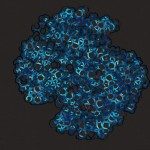Lien vers Pubmed [PMID] – 37141929
Lien DOI – 10.1016/j.resmic.2023.104075
Res Microbiol 2023 May; (): 104075
Bacteria use type II secretion systems (T2SS) to secrete to their surface folded proteins that confer diverse functions, from nutrient acquisition to virulence. In the Klebsiella species, T2SS-mediated secretion of pullulanase (PulA) requires assembly of a dynamic filament called the endopilus. The inner membrane assembly platform (AP) subcomplex is essential for endopilus assembly and PulA secretion. AP components PulL and PulM interact with each other through their C-terminal globular domains and transmembrane segments. Here, we investigated the roles of their periplasmic helices, predicted to form a coiled coil, in assembly and function of the PulL-PulM complex. PulL and PulM variants lacking these periplasmic helices were defective for interaction in the bacterial two-hybrid (BACTH) assay. Their functions in PulA secretion and assembly of PulG subunits into endopilus filaments were strongly reduced. Interestingly, deleting the cytoplasmic peptide of PulM nearly abolished the function of variant PulMΔN and its interaction with PulG, but not with PulL, in the BACTH assay. Nevertheless, PulL was specifically proteolyzed in the presence of the PulMΔN variant, suggesting that PulM N-terminal peptide stabilizes PulL in the cytoplasm. We discuss the implications of these results for the T2S endopilus and type IV pilus assembly mechanisms.


